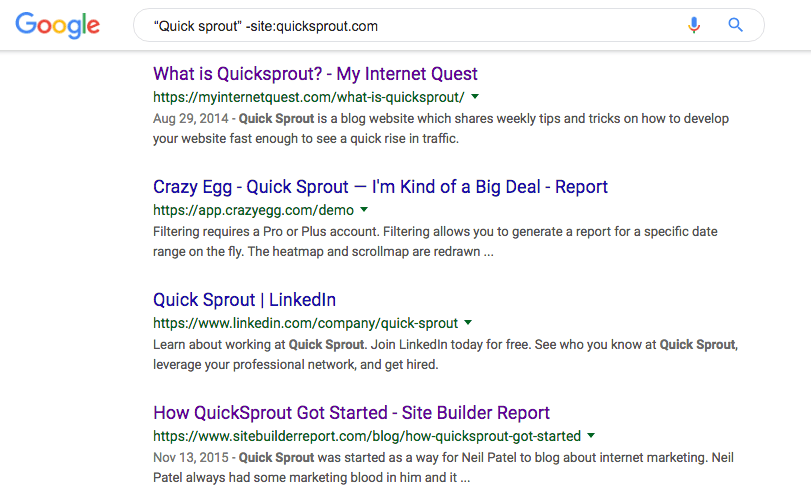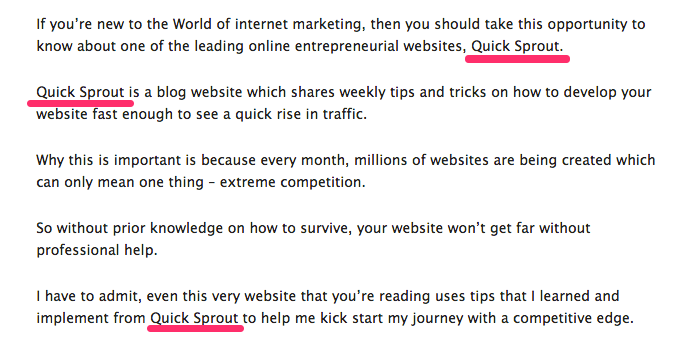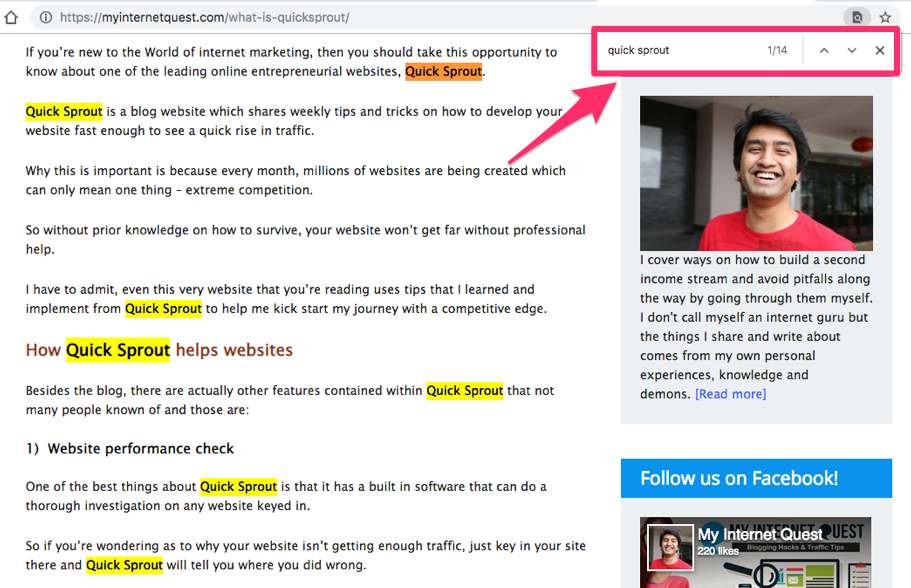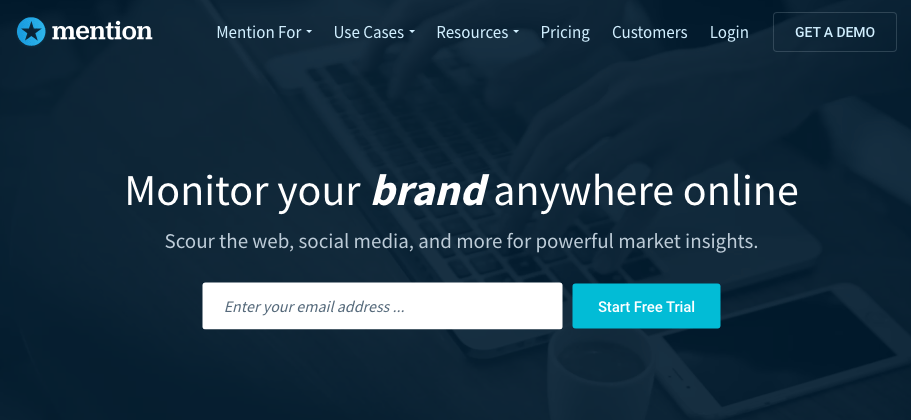I’ve got some news for you. People out there are talking about your brand.
That’s great, right? Sure—you might get the occasional negative comment here or there. But I’m sure you’ve heard the old saying, there’s no such thing as bad press.
Whether you agree with that statement or not, I didn’t create this guide to argue one side or the other. Instead, I want to explain the importance of brand mentions and how it relates to your link building strategy.
Often times, people might reference your brand without giving you a link back to your website.
Let me give you an example to show you exactly what I’m referring to. Check out this recent article from the San Francisco Chronicle.
The story talks about how Apple CEO, Tim Cook, was spotted at the Coachella music festival, and then continues to talk about his outfit choice. Just so we’re clear, the content here is irrelevant.
But point is, the article doesn’t link to Apple’s website.
Granted, Apple doesn’t need the link, so I doubt they’re going to contact the San Francisco Chronicle and ask for one. However, you’re not Apple.
Your company needs as many backlinks as possible to build authority and improve your SEO ranking.
As you and your brand grow in popularity, more and more people will continue to mention you, reference your work, or use one of your quotes to enhance their content. That was my inspiration for writing this guide.
I’ll tell you exactly what you need to do to turn these unlinked brand mentions into powerful backlinks for your website.
How to find brand mentions
Before you can proceed, the first thing you need to do is locate your brand mentions on the web.
There are certain tools that are used solely for identifying links, but those won’t be applicable here (since you’re searching for unlinked mentions). That’s OK. I’ve still got a few tips and tricks that work well for finding brand mentions online.
Google search
Google search is the first and most straightforward approach for you to take. But there are certain search strings that you need to use in order to yield the appropriate results.
Otherwise, you’ll just have irrelevant brand mentions in your search results, which makes the process much more challenging for you to complete.
Search for the name of your brand in quotes, then a subtraction sign, followed by “site:” and the name of your website. Here’s what that looks like for Quick Sprout:
“Quick sprout” -site:quicksprout.com
I mention Quick Sprout all the time when I’m blogging. This post that you’re reading right now is a perfect example of that. So I don’t want to see those pages in my search results.
That’s why I filter my search with the “-site:quicksprout.com” trick in the query.
Here’s a look at the results from this search string.
Now I’ll just need to go through the links and eliminate any that aren’t considered brand mentions, such as the LinkedIn company profile.
But there are some others on the list that appear to fit what we’re looking for.
Let’s check out the first one, which is an old blog post from My Internet Quest.
As you can see, Quick Sprout appears a few times in the introduction alone. Yet none of these mentions are linked back to the Quick Sprout website.
This is a perfect example of an unlinked brand mention that can be turned into a backlink. The only problem is this blog post was written back in 2014. There is no guarantee that the site will still be monitored on a regular basis when you find something that old.
In this case, it looks like the most recent blog post from My Internet Quest was written in October 2018, which is still relatively recent.
Another way to find more relevant brand mentions by clicking “tools” on Google and restricting the results to “last week” or “last month” as opposed to all time. This will usually eliminate social media profiles and things like that as well.
Plus, it’s more likely that people will give you a link to a recent brand mention, as opposed to something that was written years ago.
This process does take some time. You need to go through the search results one by one to see if they’re actually linked or not.
I’d recommend taking advantage of the “command + F” search function.
Then you can just type your brand name and navigate through the content with everything highlighted, as opposed to actually reading an entire blog post word for word.
Continuing with my previous example, here’s what that looks like.
Quick Sprout was mentioned 14 times in this blog, and they’re all highlighted. So I can just quickly click through all of them to verify that the brand mentions aren’t linked.
Alternatively, you can search for your name as opposed to your brand, assuming your name is tied to the company.
So let’s say an online publication wrote about you and your personal success story or something else that you’ve accomplished. You could potentially get those mentions linked to your website.
Now that the unlinked mentions have been identified, I’ll show you how to proceed with turning them into links later in this guide. But first, I want to go through a couple more strategies for finding brand mentions.
Set up Google Alerts
Running Google searches is definitely the first thing I’d recommend for identifying brand mentions. That’s because it will help you find any old mentions that you haven’t sorted out.
However, this isn’t something that you necessarily want to do every day or even every week. It’s not the most efficient use of your time once you’ve gone through the initial filtering process.
Google Alerts is great because you’ll get notified of any new brand mentions that take place after a new alert has been set up.
Here’s what it looks like when I set up an alert for Quick Sprout.
For this example, I set the alert for “as it happens,” meaning I’ll get notified immediately any time Quick Sprout gets mentioned. But you don’t necessarily need to be that proactive.
If you don’t want to get potentially multiple emails per day, you can set the alerts to be sent on a daily or weekly basis.
You also have the option to change the sources. By default, it’s set to automatic. But other options include:
- News
- Blogs
- Web
- Video
- Books
- Discussions
- Finance
Depending on your link building strategy, you could set up different alerts based on these options. Maybe you want to prioritize any brand mentions in the news, so you can set those alerts for “as it happens.” But maybe you don’t mind waiting a week to get notified about blogs or discussions.
Google also gives you the opportunity to filter alerts by your region. Since Quick Sprout is a global brand, I kept it set at “any region,” but you can change it to your local country if you prefer.
You might also want to change “only the best results” to “all results” to guarantee that you won’t miss any brand mentions.
Once you’re alerted by email, simply navigate to the site or page that mentioned you to see if they linked to your website or not.
I’d also recommend creating alerts for variations of your brand name. For Quick Sprout, I also set alerts for “quicksprout” and “quicksprout.com.”
Leverage brand mention software
There are tons of tools and resources on the web made specifically for monitoring brand mentions. One of my favorites is definitely Mention.com.
The reason why I like this tool is because it’s so versatile.
In addition to monitoring your brand mentions, it doubles as a tool for monitoring your competitors, campaigns, and customers.
But those are all topics for another day. For now, we’ll stick to tracking your brand mentions.
The Mention.com tool automatically monitors websites, blogs, forums, and social media platforms on a daily basis. You’ll get detailed insights and in-depth reports related to your brand management.
With that said, Mention.com is a paid service. The basic price points are $29 and $99 per month. If you pay for a year contract, the rates drop to $25 and $83 per month, respectively. They also have enterprise software starting at $600+ per month, but I don’t think that’s really necessary for the majority of you.
If you’re only planning to use this software for brand mentions, you can probably just stick to free solutions like Google Alerts and Google searches. But if you’re planning to use the other features that come with the subscription, the $25 monthly rate is justifiable.
Reach out to sites that mentioned your brand
As I’m sure you could have guessed, once you’ve identified your brand mentions, it’s time to reach out to those websites. But you don’t necessarily need to contact all of them.
It’s in your best interest to stick with websites that have a high domain authority and high page authority.
You should also prioritize the most recent brand mentions. If a sketchy looking website that’s not secured mentioned you in a blog post back in 2011, it’s probably not worth your time to follow up with them.
It’s also imperative that you contact the right person. Some sites, especially larger ones, will have different departments. Whenever possible, you’ll want to contact the webmaster or blogger directly, as opposed to just sending a general customer service inquiry.
Be polite. I can’t stress this enough.
Don’t send a nasty email saying something like, “I can’t believe you didn’t link to my website! That’s ridiculous! You NEED to do this ASAP or you’re going to regret it!”
This approach isn’t going to get you anywhere. Instead, try something like this:
“Hey! I just read your article and noticed that you mentioned my brand. I loved the post. Would you mind adding a link to my website?”
You’ll have much more success with this route. In theory, this is an easy way to find link opportunities since these people have already mentioned you. So it’s not that far of a stretch to think that they would turn that mention into a link. Just make sure you flex your people skills.
Conclusion
In addition to link building, there are plenty of other benefits to tracking brand mentions.
This will help you stay on top of things and keep you up to date on what people are saying about your brand. You can potentially get out in front of something negative before it spreads.
The last thing you want is to be left in the dark while people are saying things about your business. It doesn’t matter if the feedback is good or bad, you always need to keep your finger on the pulse. Ultimately, this can help you improve your online reputation.
As for turning brand mentions into links, the first thing you need to do is identify the sources. Use Google search, Google Alerts, and brand mention software to help you out.
After that, it’s as simple as contacting the websites and asking for a link.
If you follow the tips and tricks that I’ve outlined in this guide, you’ll be on your way to building more backlinks from brand mentions in no time at all.






